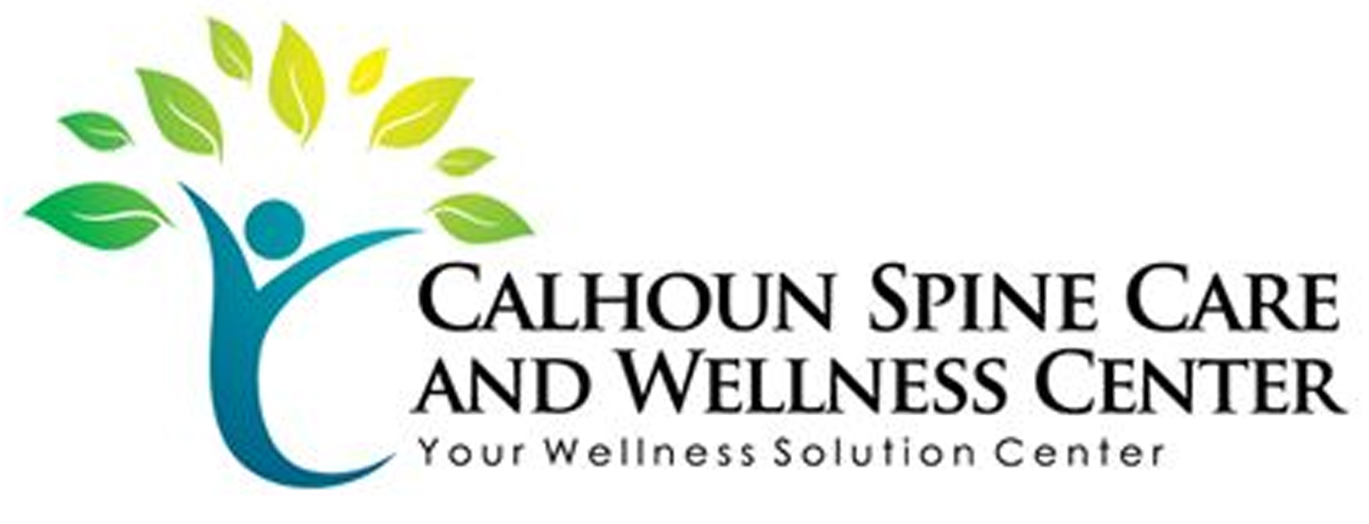When you experience migraines, finding effective relief can feel overwhelming, but Calhoun Care offers a natural solution that might just change your approach. By focusing on a holistic strategy that includes identifying personal triggers and integrating lifestyle changes, you're not just masking the pain; you're addressing the root causes. This method also utilizes natural remedies, allowing you to avoid the side effects often associated with traditional medications. Curious about how these practices can reshape your experience and offer long-term relief? There's much more to uncover.
Understanding Migraines
When it comes to understanding migraines, it's vital to recognize that these aren't just bad headaches. Migraines can be debilitating episodes characterized by intense pain, often accompanied by nausea, light sensitivity, and even aura symptoms like visual disturbances. You might find that migraines can last anywhere from a few hours to several days, making it essential to grasp their nuances.
You should know that migraines often have triggers, which could range from hormonal changes and certain foods to environmental factors like bright lights or strong smells. Identifying your specific triggers can empower you to manage your condition more effectively. Keeping a migraine diary to track when and what you eat, your stress levels, and other activities can help you pinpoint patterns that lead to an attack.
The pain from a migraine usually centers on one side of your head but can also affect both sides. This throbbing pain often worsens with physical activity, making it challenging to carry on with your day-to-day life.
It's also common for migraines to be hereditary; if someone in your family suffers from them, you might be more likely to experience them too.
Understanding the different phases of a migraine—prodrome, aura, attack, and postdrome—can also help you anticipate and prepare for an episode. The more you learn about migraines, the better equipped you'll be to manage the impact they've on your life.
The Calhoun Care Approach
The Calhoun Care Approach focuses on treating migraines through a holistic lens.
You'll find that personalized care plans and natural pain management techniques are at the core of this methodology.
This guarantees that your unique needs are prioritized in your journey toward relief.
Holistic Treatment Methodology
Embracing a holistic treatment methodology, the Calhoun Care Approach addresses migraines through an integrative lens that considers the whole person—body, mind, and spirit. This approach recognizes that migraines aren't just physical symptoms; they can be influenced by emotional and environmental factors as well.
By examining these interconnected elements, you can discover potential triggers and patterns that may be contributing to your pain.
The Calhoun Care team emphasizes the importance of lifestyle changes, encouraging you to adopt healthier habits that promote overall well-being. From nutrition and hydration to sleep hygiene and stress management, every aspect of your life is considered.
Techniques such as mindfulness, meditation, and gentle exercise are incorporated to help you cultivate a sense of balance and inner peace.
Additionally, the approach often includes natural remedies, such as herbal supplements and essential oils, which can provide relief without the side effects associated with traditional medications.
#
Personalized Care Plans
Personalized care plans are at the heart of the Calhoun Care Approach, tailoring treatments specifically to your individual needs and circumstances. When you come to Calhoun Care, you'll undergo a thorough assessment that considers your medical history, lifestyle, and specific migraine triggers. This extensive evaluation helps us craft a plan that addresses your unique situation, ensuring you receive the most effective care possible.
We recognize that migraines aren't one-size-fits-all. Your plan might include dietary adjustments, stress management techniques, or alternative therapies designed to fit seamlessly into your daily routine. By focusing on your personal experiences with migraines, we aim to enhance your quality of life and minimize the frequency and intensity of your episodes.
As you engage with your personalized care plan, you'll have the opportunity to provide feedback and make adjustments as needed. This collaborative approach empowers you to take charge of your health while ensuring that your treatment evolves alongside your needs.
Ultimately, the goal is to help you find lasting relief from migraines in a way that feels right for you.
Natural Pain Management Techniques
At Calhoun Care, we recognize the importance of incorporating natural pain management techniques into your personalized care plan. These techniques empower you to take control of your migraine symptoms and improve your overall well-being.
One effective method is mindfulness meditation. By practicing mindfulness, you can reduce stress and tension, which are common migraine triggers.
Breathing exercises can also help; deep, controlled breaths promote relaxation and ease pain.
Another technique is the use of essential oils. Peppermint and lavender oils can provide soothing relief when applied topically or inhaled.
Additionally, regular physical activity, like yoga or gentle stretching, can enhance blood flow and reduce the frequency of migraines.
Nutrition plays a vital role too. Staying hydrated and consuming a balanced diet rich in magnesium and omega-3 fatty acids can help mitigate migraines.
Finally, consider acupuncture or acupressure. These ancient practices focus on relieving tension and promoting natural healing.
Incorporating these natural pain management techniques into your care routine can greatly enhance your quality of life, helping you tackle migraines with confidence and ease.
Holistic Therapies Explained
Holistic therapies for migraines offer a thorough approach that considers the whole person rather than just the symptoms. These therapies recognize that migraines can stem from various physical, emotional, and environmental factors. By addressing these underlying causes, you can find more effective and lasting relief.
One key aspect of holistic therapies is stress management. Techniques like mindfulness meditation, yoga, and deep-breathing exercises help lower stress levels, which often trigger migraines. When you incorporate these practices into your daily routine, you enhance your ability to manage stress and reduce the frequency of your headaches.
Another important component is physical touch therapies. Massage therapy and acupuncture can alleviate muscle tension and improve circulation, both of which can contribute to migraine relief. By stimulating specific points in the body, acupuncture promotes the release of endorphins, helping to reduce pain perception.
In addition to stress management and physical touch, aromatherapy can also play a role in addressing migraine symptoms. Essential oils like lavender and peppermint have calming and pain-relieving properties. You can use a diffuser or apply diluted oils to your temples to experience their benefits.
Ultimately, holistic therapies for migraines empower you to take charge of your health. By integrating these approaches into your lifestyle, you can cultivate a greater sense of well-being and reduce the impact of migraines on your life.
Embracing this all-encompassing strategy allows you to approach migraine relief with a fresh perspective, focusing on healing rather than just symptom management.
Nutritional Support for Migraines
When it comes to managing migraines, what you eat can make a big difference.
Essential vitamins and minerals, proper hydration, and anti-inflammatory foods play key roles in reducing the frequency and severity of your headaches.
Let's explore how these nutritional factors can support your overall well-being and help you find relief.
Essential Vitamins and Minerals
Essential vitamins and minerals play an important role in managing migraines and can greatly impact your overall health. When you focus on your nutrition, you can potentially reduce the frequency and intensity of your migraine attacks.
Magnesium is particularly crucial; studies suggest that a deficiency may trigger migraines. Incorporating foods rich in magnesium, such as leafy greens, nuts, and whole grains, can help maintain adequate levels.
Similarly, vitamin B2 (riboflavin) has shown promise in decreasing migraine occurrences. Foods like eggs, dairy, and lean meats are excellent sources.
Don't overlook vitamin D, either. Low levels of this vitamin have been linked to increased migraine severity. Regular sun exposure and foods like fatty fish can boost your vitamin D intake.
Lastly, consider incorporating coenzyme Q10 (CoQ10), which has antioxidant properties that may reduce migraine frequency. You can find it in meat, fish, and whole grains, or as a supplement.
Hydration and Migraine Relief
Staying adequately hydrated is essential for managing migraines and can complement the benefits of vitamins and minerals in your diet. Dehydration often triggers headaches, including migraines, so it's vital to drink enough water throughout the day. Aim for at least eight glasses, but listen to your body; your needs may vary based on activity level and climate.
When you're properly hydrated, your blood volume increases, ensuring that oxygen and nutrients flow efficiently to your brain. This not only helps prevent headaches but can also reduce the severity and frequency of migraines. If you find plain water boring, try infusing it with fruits or herbs, or consume hydrating foods like cucumbers and watermelon.
Additionally, be mindful of your caffeine intake. While a small amount can sometimes provide relief, too much can lead to dehydration and withdrawal headaches. Alcohol can also contribute to dehydration, so it's best to limit your intake.
Incorporating hydration into your daily routine is simple. Keep a water bottle on hand, set reminders, and make hydration a priority. By staying hydrated, you'll take an important step toward reducing your migraine symptoms naturally.
Anti-Inflammatory Foods Benefits
Anti-inflammatory foods can play an indispensable role in managing migraines by reducing inflammation in the body and promoting overall health. Incorporating these foods into your diet can help you alleviate migraine symptoms and enhance your well-being.
Fruits and vegetables, particularly berries, leafy greens, and citrus, are loaded with antioxidants that combat oxidative stress. Omega-3 fatty acids, found in fish like salmon and walnuts, can greatly reduce inflammation. Whole grains such as brown rice and quinoa provide essential fiber, aiding digestion and stabilizing blood sugar levels.
Spices like turmeric and ginger are powerful anti-inflammatories, so consider adding them to your meals or smoothies.
Fermented foods, such as yogurt and kimchi, can improve gut health, which may be linked to migraine occurrences. Staying away from processed foods, sugars, and trans fats is vital, as they can increase inflammation.
Stress Management Techniques
Managing stress is essential for preventing migraines and improving overall well-being. When you're stressed, your body releases hormones that can trigger headaches, so finding effective stress management techniques can make a considerable difference.
Start by incorporating deep-breathing exercises into your daily routine. Taking just a few minutes to focus on your breath can help calm your mind and ease tension. Try inhaling deeply through your nose, holding for a moment, and exhaling slowly through your mouth. You'll likely notice a shift in your body's response to stress.
Another effective technique is mindfulness meditation. This practice encourages you to stay present and observe your thoughts without judgment. You can begin with just five to ten minutes a day, gradually increasing the time as you become more comfortable. Apps or guided sessions can help you get started.
Physical activity is also a powerful stress reliever. Whether it's a brisk walk, yoga, or dancing, find an activity that you enjoy, and make it part of your routine. Exercise releases endorphins, which can elevate your mood and reduce stress levels.
Lastly, don't underestimate the power of social support. Connecting with friends or family, whether through face-to-face interactions or a simple phone call, can provide emotional relief. Sharing your feelings helps you feel understood and supported, which can considerably lower stress.
## Personalized Care Plans
Personalized care plans offer a tailored approach to managing migraines, guaranteeing that your unique triggers and symptoms are addressed effectively. At Calhoun Care, we recognize that no two migraine sufferers are alike. That's why we focus on creating a plan specifically designed for you.
During your initial consultation, you'll share detailed information about your migraine history, including frequency, duration, and severity. This allows us to pinpoint your specific triggers, whether they're hormonal, environmental, or dietary. Based on this information, we'll develop a thorough care plan that combines various natural therapies and interventions.
Your personalized plan may include a variety of techniques such as acupuncture, biofeedback, and nutritional counseling. We'll also incorporate holistic practices that promote relaxation and stress relief, which are essential in reducing migraine frequency.
By addressing both the physical and emotional aspects of your migraines, we aim to create a balanced approach that empowers you to take control of your health.
You'll receive ongoing support and regular check-ins to assess your progress. If certain strategies aren't working as well as expected, we're flexible and ready to adapt your plan accordingly. This responsive approach guarantees that you're always on the right path toward effective migraine management.
Lifestyle Adjustments
Making simple lifestyle adjustments can greatly impact your migraine management.
By focusing on a balanced diet, staying hydrated, and implementing stress management techniques, you can better control your symptoms.
Let's explore how these changes can enhance your overall well-being.
Balanced Diet Importance
A balanced diet plays an essential role in managing migraines effectively. By focusing on whole, nutrient-dense foods, you can help reduce the frequency and intensity of your migraine attacks. Incorporating a variety of fruits, vegetables, whole grains, lean proteins, and healthy fats will provide your body with the essential vitamins and minerals it needs to function at its best.
Pay attention to potential trigger foods that might exacerbate your migraines. Common culprits include aged cheeses, processed meats, and artificial sweeteners. Keeping a food diary can help you identify any patterns between what you eat and your migraine occurrences. Once you've pinpointed your triggers, eliminate them from your diet.
It's also important to maintain stable blood sugar levels throughout the day. Eating regular meals and snacks rich in protein and complex carbohydrates can help prevent spikes and drops in blood sugar that may trigger migraines.
Don't forget to include magnesium-rich foods like spinach, nuts, and whole grains, as magnesium deficiency has been linked to increased migraine frequency.
Hydration Practices
Staying well-hydrated is essential for managing migraines effectively. Dehydration can trigger headaches and worsen existing symptoms, so making hydration a priority can greatly improve your quality of life.
Here are some practical hydration practices you can adopt:
- Drink water consistently: Aim for at least eight 8-ounce glasses of water daily. Carry a reusable water bottle to remind yourself to sip throughout the day.
- Infuse your water: If plain water doesn't excite you, try infusing it with fruits like lemon, cucumber, or berries. This can make hydration more enjoyable and encourage you to drink more.
- Monitor your intake: Keep track of how much water you consume. You might be surprised at how little you actually drink. Consider using an app or a simple journal to help you stay accountable.
Stress Management Techniques
Managing stress effectively can considerably reduce the frequency and intensity of migraines. By adopting specific stress management techniques, you can create a more balanced lifestyle and minimize migraine triggers.
Start with deep breathing exercises. When you feel tension building, take a moment to breathe deeply, inhaling for a count of four, holding for four, and exhaling for four. This simple practice can help calm your mind and reduce stress.
Incorporating regular physical activity into your routine is another essential technique. Aim for at least 30 minutes of moderate exercise most days. Activities like walking, yoga, or swimming not only help release endorphins but also improve your overall mood.
Mindfulness and meditation can also be powerful tools. Set aside time each day to focus on the present moment, allowing your thoughts to settle. Apps or guided sessions can make this practice easier.
Lastly, prioritize sleep. Establish a consistent sleep schedule, and create a restful environment to promote better quality sleep.
Mind-Body Connection
Understanding the mind-body connection is essential for effectively addressing migraines. Your mental and emotional state plays a significant role in how your body responds to pain. When you experience stress, anxiety, or negative emotions, your body can react by tightening muscles, increasing tension, and ultimately triggering a migraine. By recognizing this connection, you can take proactive steps to alleviate your discomfort.
Here are some key aspects to reflect upon:
- Emotional Awareness: Being aware of your emotions can help you identify triggers. When you notice stress or anxiety building, you can implement strategies to manage these feelings before they escalate.
- Relaxation Techniques: Incorporating relaxation practices such as deep breathing, meditation, or yoga can help reduce tension in your body and mind. These techniques not only promote relaxation but also improve your overall sense of well-being.
- Mindfulness Practices: Mindfulness encourages you to stay present and acknowledge your thoughts and feelings without judgment. This practice can help break the cycle of negative thinking that often contributes to migraines.
Patient Success Stories
Many patients have found relief from migraines by incorporating strategies that address both their physical and emotional well-being.
Take Sarah, for example. After suffering from debilitating migraines for years, she decided to try Calhoun Care. By engaging in personalized therapy sessions and learning mindfulness techniques, Sarah noticed a significant reduction in the frequency and intensity of her headaches. She felt empowered to take control of her health.
Then there's Mike, who struggled with migraines triggered by stress. Through Calhoun Care's holistic approach, he learned to identify his triggers and manage stress effectively. With the support of the team, he adopted relaxation techniques like deep breathing and yoga. Now, Mike enjoys a more balanced life, free from the overwhelming grip of migraines.
Another success story comes from Laura, who'd long relied on medication for relief. She sought Calhoun Care to explore alternative methods. After participating in guided meditation and nutritional counseling, Laura found that her migraines became less frequent and less severe. She appreciates that she can manage her symptoms naturally, without the side effects of pharmaceuticals.
These patient experiences highlight the effectiveness of Calhoun Care's thorough approach. By addressing both physical symptoms and emotional triggers, individuals can find their paths to relief.
Each story is a reflection of the potential for transformation, showing that you can regain control over your well-being and live a life with fewer migraines.
Taking the Next Steps
Taking control of your migraine journey starts with the next steps you choose to take. At Calhoun Care, we believe that proactive measures can lead to significant improvements in managing your migraines. You don't have to settle for suffering in silence; there are effective strategies to explore.
First, consider scheduling an appointment with our specialists. They'll conduct a thorough evaluation to identify your specific triggers and recommend tailored treatments that suit your lifestyle.
Next, you should start tracking your migraine patterns. Keeping a detailed diary can help you recognize potential triggers and understand how your body responds to different interventions.
Finally, embrace lifestyle changes that promote overall wellness.
Here's a quick list to help you get started:
- Consult a specialist: Gain insights and personalized treatment options.
- Track your migraines: Identify triggers and patterns for better management.
- Adopt healthy habits: Improve your overall well-being through diet, exercise, and stress management.
Taking these steps will empower you to take charge of your migraines. Remember, the journey may require patience and persistence, but with the right support, you can find relief and improve your quality of life.
At Calhoun Care, we're here to guide you every step of the way, ensuring you have the tools necessary to navigate your migraine management effectively. Don't hesitate to reach out and begin your path toward a migraine-free life today!
Conclusion
At Calhoun Care, you can find a natural path to relief from migraines by embracing a holistic approach tailored just for you. By focusing on your unique triggers and incorporating lifestyle changes, nutritional support, and stress management techniques, you'll empower yourself to take control of your health. With dedication and the right strategies, you can reduce migraine frequency and enhance your overall well-being. Start your journey to a pain-free life today!



